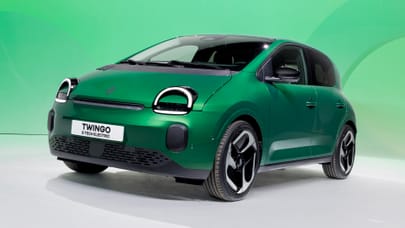
Tesla's robotaxis have been caught driving erratically, and the NHTSA wants a word
US traffic safety authorities have contacted the carmaker to further scrutinise reports of unsafe driving
The US National Highway Traffic Safety Administration (NHTSA) wants to speak to Tesla after footage emerged online capturing the carmaker's Model Y-based robotaxis behaving erratically. It was at the launch of the self-driving service in Austin, Texas, earlier this week.
The incidents include one robotaxi braking especially hard while passing a stationary police car with its blues-and-twos on, while another shows the taxi having a bit of a wobbly as it crosses the middle line to the other side of the road, unsure whether to join a filter lane or turn left. It ends up on the wrong side of the road with the safety driver sitting in the passenger seat.
The NHTSA told TopGear.com: “[The agency is] aware of the referenced incidents and is in contact with the manufacturer to gather additional information. NHTSA will continue to enforce the law on all manufacturers of motor vehicles and equipment, in accordance with the Vehicle Safety Act and our data-driven, risk-based investigative process.
"Under U.S. law, NHTSA does not pre-approve new technologies or vehicle systems – rather, manufacturers certify that each vehicle meets NHTSA’s rigorous safety standards, and the agency investigates incidents involving potential safety defects. Following an assessment of those reports and other relevant information, NHTSA will take any necessary actions to protect road safety."
The safety administration is still investigating Tesla's "Full Self-Driving (Supervised)/Beta systems too – that's the driver assistance system, as opposed to full self-driving – following four crashes (one resulting in a fatality) in cars that "entered reduced visibility conditions" including sun glare and fog. TopGear.com has approached Tesla for comment.
Elsewhere, the UK government has accelerated plans to get Uber's robot taxis on London roads as early as next year. Professor Siddartha Khastgir, head of safe autonomy at Warwick University said; "The UK is well positioned to avoid such incidents due to the regulatory regime it has, i.e., type-approval regime.
"Once Uber applies for the license, its application will be assessed by the DfT and its agencies (namely Vehicle Certification Agency) who will do a thorough audit of their development and the product. A big part of this assessment would be the product’s compliance to UK’s traffic rules and its behaviour."
Khastgir explains not everything can be thought about, despite folks' best intentions. He added: "It is essential to capture these scenarios, learn and share them with the wider ecosystem. That’s how aviation has established its high bar of safety today, and is still the safest form of transport."
Top Gear
Newsletter
Thank you for subscribing to our newsletter. Look out for your regular round-up of news, reviews and offers in your inbox.
Get all the latest news, reviews and exclusives, direct to your inbox.








